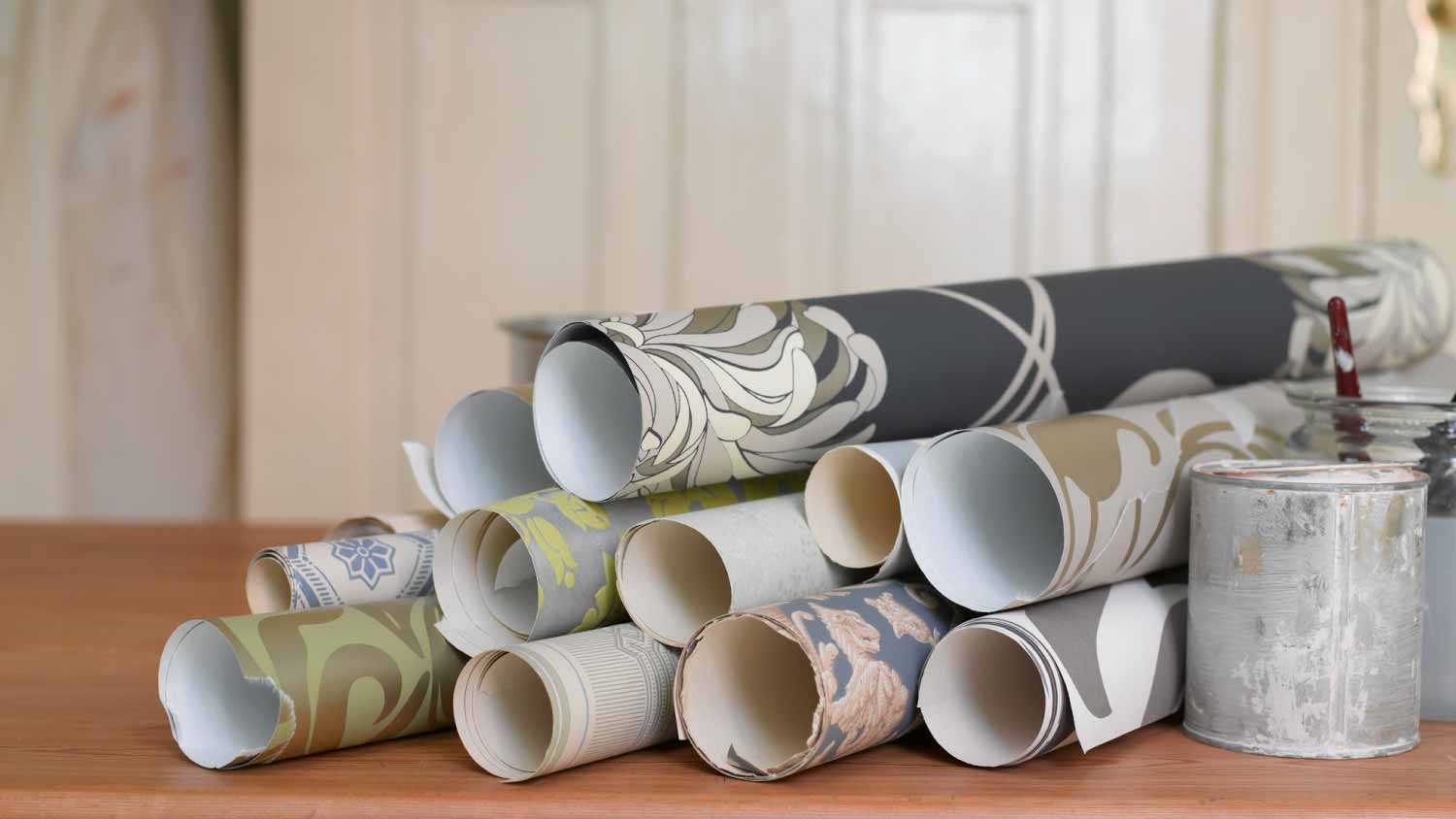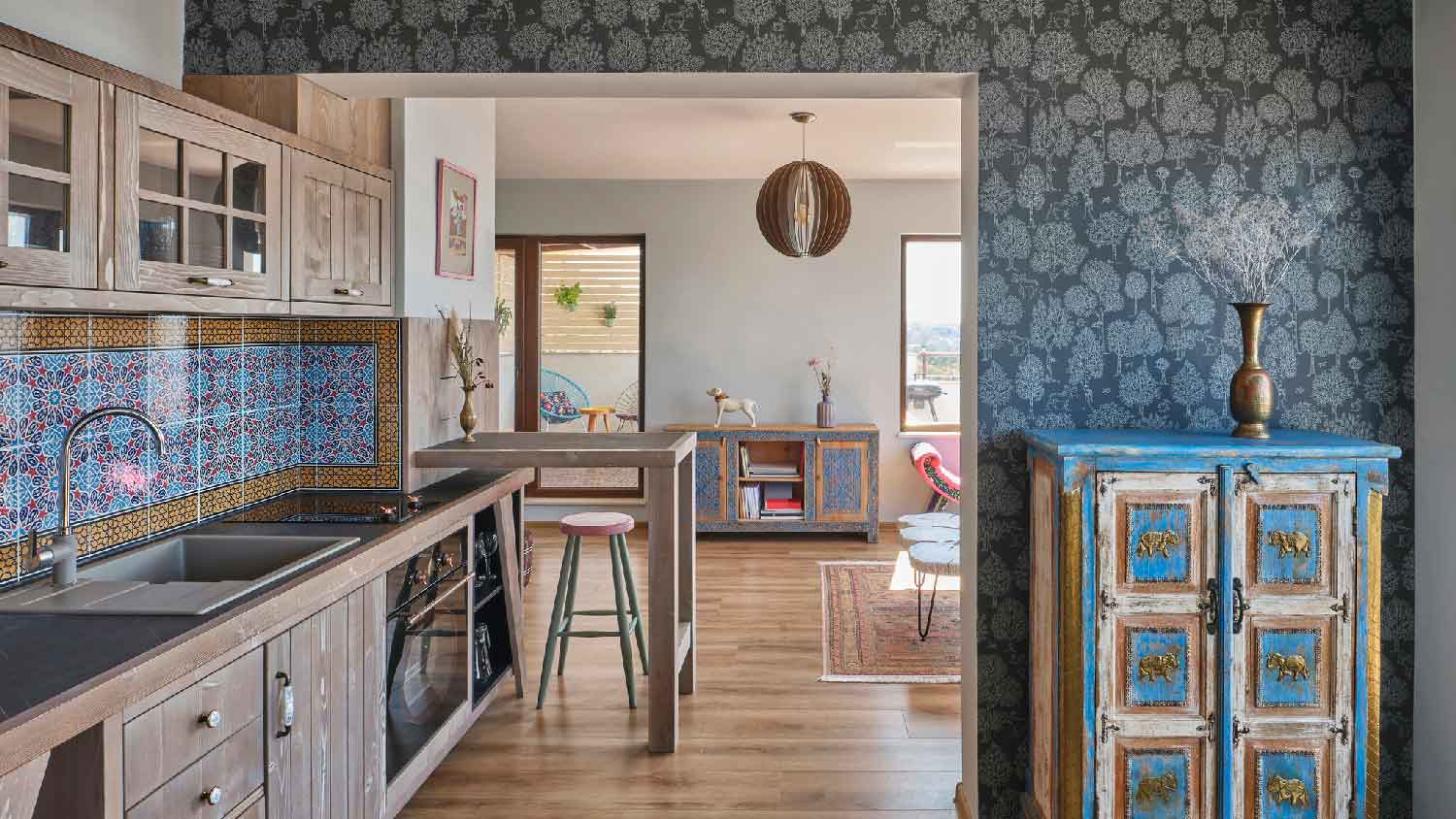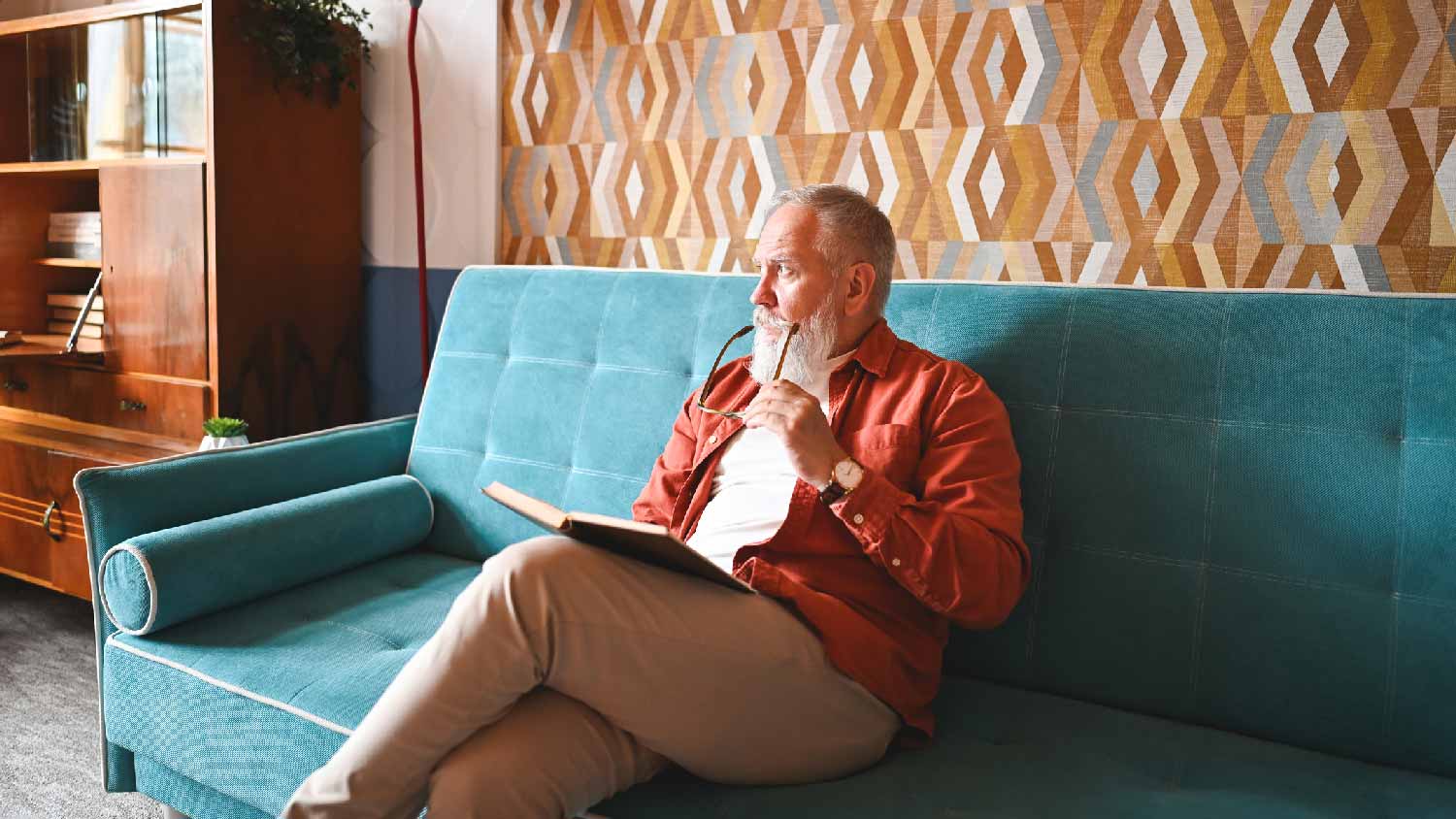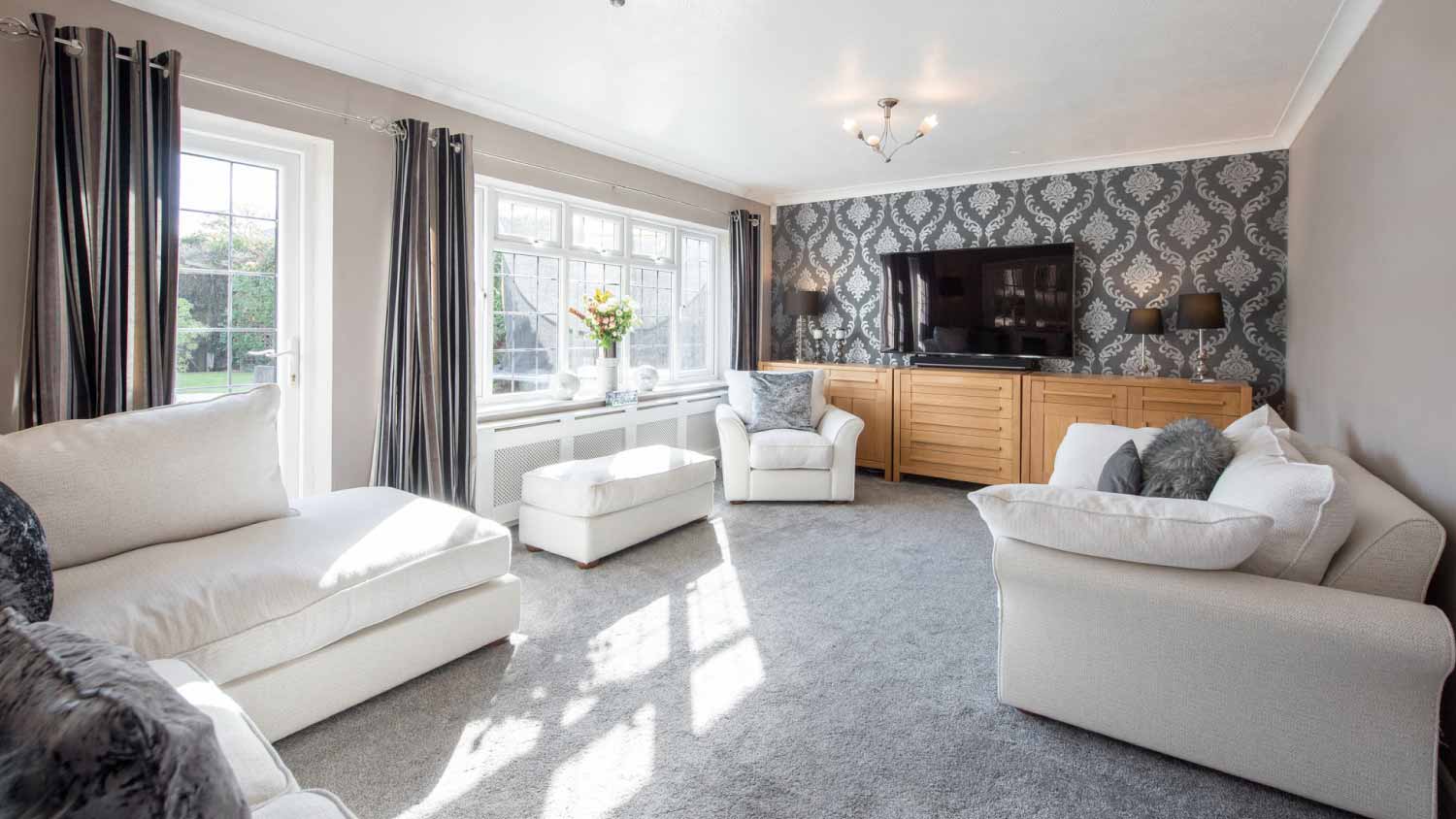Here’s the Average Life Span of Peel-and-Stick Wallpaper
Peel-and stick-wallpaper may last a few years or hang around for over a decade


Cheap, old, or thin peel-and-stick wallpaper lasts about three years.
Higher quality, newer peel-and-stick wallpaper can stay up for seven years or more.
Peel-and-stick wallpaper won’t last as long in humid areas or those with extreme temperatures.
Install the wallpaper properly to maximize its life span.
It’s no wonder peel-and-stick wallpaper is a consumer favorite—this self-adhesive product is an easy-to-install, low-commitment, inexpensive way to add a touch of color to any space. How long peel-and-stick wallpaper lasts depends on the type of adhesive used, the material quality, the installation location, and whether it’s properly installed.
Generally speaking, peel-and-stick wallpaper can start falling off in as little as three years or stick around as long as you decide to keep it on your walls. If you love the look of your peel-and-stick wallpaper design, there are some things you can do to keep it around as long as possible.
Factors Influencing How Long Peel-and-Stick Wallpaper Lasts

When correctly applied, quality peel-and-stick wallpaper can last five to seven years or more. Peel-and-stick wallpaper will last longest on smooth-textured, properly prepared walls and in areas without high humidity or temperature fluctuations. This renter-friendly solution is also a great option for homeowners who want to change the look of a room without the commitment and complicated installation of traditional wallpaper.
"Wallpaper also works best in lower-traffic rooms that don’t get very much moisture. Rooms like kitchens and bathrooms are not ideal for wallpaper since those are considered high-moisture areas and can cause the paper to peel."
— Gregory Pittman, Director of Commercial Painting Services at Five Star Painting
Factors Influencing How Long Peel-and-Stick Wallpaper Lasts
Signs It’s Time to Replace Your Peel-and-Stick Wallpaper
How do you know when your peel-and-stick wallpaper is nearing the end of its life span? A few visible signs will clue you in that it’s time to replace it. Look out for:
Peeling at the seams or along the edges
Faded or discolored patterns
Splits or cracks in the paper
Crumbling or flaking paper
Bubbling between the wallpaper and the wall
How to Improve Peel-and-Stick Wallpaper’s Longevity
You can do many things to improve the life span of your peel-and-stick wallpaper. First, buy high-quality wallpaper from a reputable brand—wallpaper from a no-name brand may rip or fall off easily if it’s too thin or has poor adhesive.
Choose the Right Wallpaper for Your Space
Check the manufacturer's recommendations before purchasing peel-and-stick wallpaper, as some products are only designed to adhere to eggshell, satin, and semigloss paints. If you have the wrong type of paint, you may need to find a different peel-and-stick wallpaper or upgrade to traditional wallpaper instead. And if the installation process for regular wallpaper is too involved for you to DIY, consider working with a local wallpaper installer.

Application
How you install your peel-and-stick wallpaper will affect how long it lasts. It’s important to properly prime before wallpaper installation to ensure good adhesion—poorly prepped walls will prevent the wallpaper from sticking well and will lead to peeling or bubbling.
Installation Area
Where your peel-and-stick wallpaper is installed can also affect its longevity. Wallpaper that’s installed in humid or damp spaces will peel faster than in dry areas, and rooms that have significant temperature fluctuations will wear out wallpaper quickly. Installing peel-and-stick wallpaper in spaces that get extended direct sunlight can not only cause fading but may also make the adhesive fail faster than expected.
Consider Your Installation Area
Some peel-and-stick wallpapers are designed to be moisture-resistant, meaning they are safe for kitchen and bathroom installation, while others are not.
Similarly, buying wallpaper labeled as “washable” is typically a good idea unless you’re installing it somewhere where it is unlikely to get dirty.
Follow the Manufacturer’s Installation Instructions
Always clean the walls according to the instructions before installing and allow the surface to dry completely—overnight if possible.
Some wallpaper companies will instruct you to overlap the paper, while others should be placed side by side. When installing, take the time to remove the bubbles from the wallpaper to increase its adhesion and improve its appearance.
Clean the Wallpaper
Once your paper is installed, clean it according to manufacturer recommendations, usually with a mild dish soap and a soft sponge.
Beyond that, try to keep your home at a consistent temperature, which can help keep the wallpaper in place longer. Regularly fluctuating temperatures can weaken the wallpaper adhesive.
Frequently Asked Questions
When comparing peel-and-stick wallpaper and traditional wallpaper, each has its own pros and cons—the one that’s better for you depends on your needs and space. Peel-and-stick wallpaper is more budget-friendly and easier to install, while traditional wallpaper lasts much longer and can be used in a wider variety of spaces.
Peel-and-stick wallpaper is designed to be removed without damaging your walls. However, improper application, certain wall textures, and removing the wallpaper too quickly or aggressively may lead to paint or drywall damage, so use caution and follow all manufacturer instructions.
To determine how many rolls of peel-and-stick wallpaper you need, measure the square footage of the walls you’re covering and divide that by the square footage that each roll covers. Add 10% to 20% of your total square footage to account for pattern matching or damage while installing.





- Peel-and-Stick vs. Traditional Wallpaper: Which Is Right for Your Space?
- Can You Put Wallpaper Over Wallpaper?
- What’s the Best Temperature to Hang Wallpaper?
- Who Can I Hire to Install Wallpaper?
- Why Is It Important to Prime Before Wallpaper Installation?
- Wallpaper vs. Paint: Which Is Right for You?
- How to Hire Someone to Remove Wallpaper
- Everything to Know Before Painting Over Wallpaper
- 14 Bathroom Wallpaper Ideas You’ll Love
- How to Paint Paintable Wallpaper in 6 Steps










